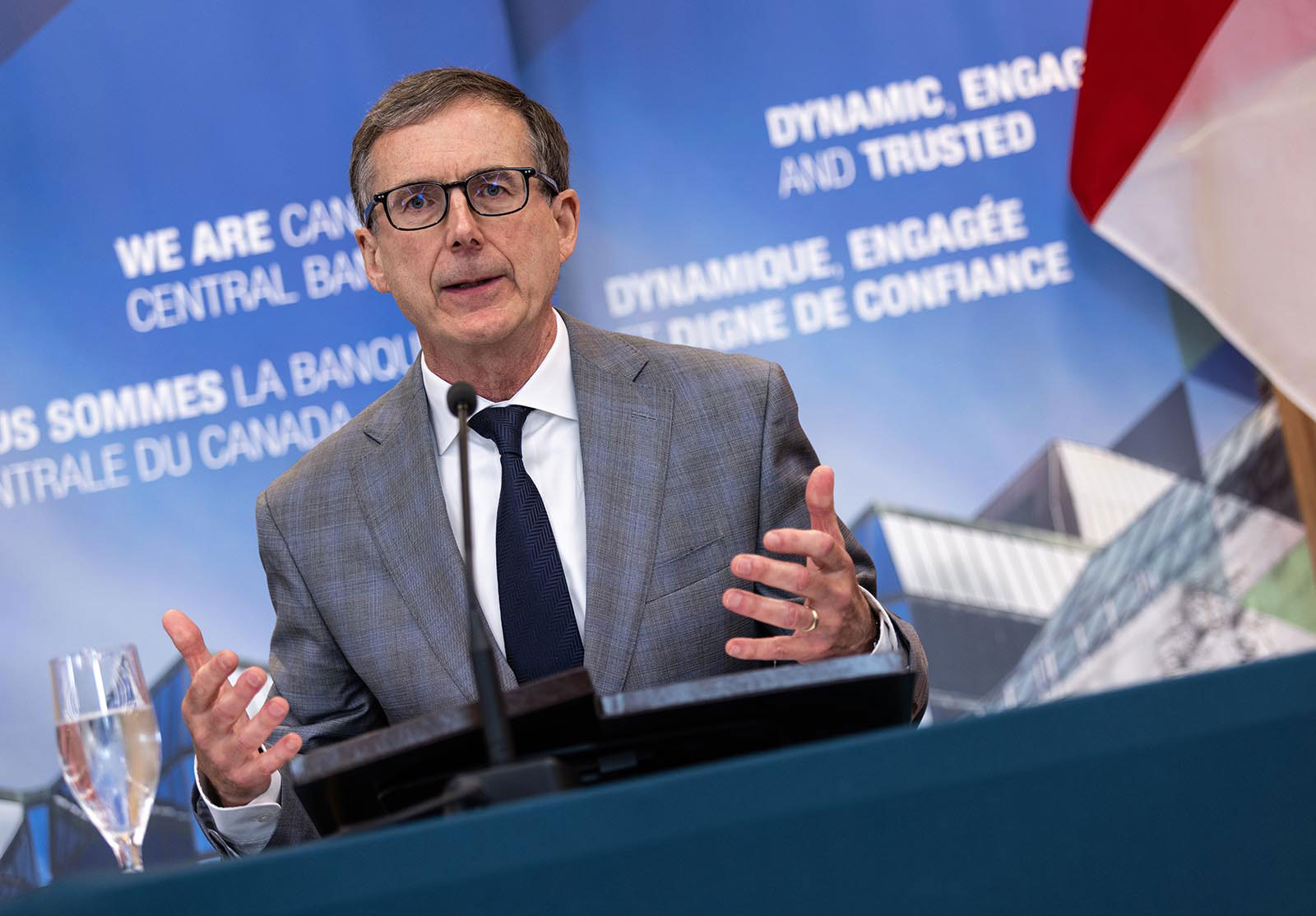
The Bank of Canada is turning its attention to when it may be able to start cutting interest rates, governor Tiff Macklem said Wednesday as he announced the central bank’s decision to hold its key rate at 5%.
“With overall demand in the economy no longer running ahead of supply, governing council’s discussion of monetary policy is shifting from whether our policy rate is restrictive enough to restore price stability, to how long it needs to stay at the current level,” Macklem said in a news conference.
The Bank of Canada’s decision to maintain its key rate comes as no surprise. Weaker economic growth along with slowing inflation has allowed the central bank to hold its policy rate steady and monitor how the economy is responding to higher rates.
However, economists have been eagerly waiting for any sign from the bank on when it may pivot to rate cuts.
Royce Mendes, managing director and head of macro strategy at Desjardins, said the central bank’s pivot was “as much as anyone could have hoped for.”
“The central bank wasn’t going to go from a bias towards hiking rates to a bias towards cutting rates in one meeting, so there is this transition period,” Mendes said.
Despite the shift in messaging, Macklem maintained that the central bank is still open to more rate hikes if inflation doesn’t co-operate.
“That doesn’t mean we have ruled out further policy rate increases. If new developments push inflation higher, we may still need to raise rates,” Macklem said.
“But what it does mean is that if the economy evolves broadly in line with the projection we published today, I expect future discussions will be about how long we maintain the policy rate at 5%.”
Mendes said the central bank made the right call in signaling to Canadians that more rate hikes are very unlikely.
“We really don’t need any more rate hikes. But we probably need right now is just a length of time for these high interest rates to work their way through the system,” he said.
The central bank also made a point to say that inflation is too high, noting in a press release that the governing council is still concerned about the stubbornness of elevated inflation.
Canada’s annual inflation rate ticked back up in December to 3.4% as underlying price pressures remained high.
The central bank emphasized the role shelter costs were playing in propping up inflation, noting it is the biggest contributor.
TD chief economist Beata Caranci found this focus surprising given the central bank has limited influence on shelter price inflation.
Macklem “kept referring to shelter and food, but those are not going to suddenly collapse because of the interest rates,” Caranci said. “So [if] that’s what’s ultimately your focus on what is holding up your inflation metrics and delaying you from cutting interest rates, that’s not going to change in the next few months,” she said.
The Bank of Canada has acknowledged that shelter costs are being driven in part by structural barriers to homebuilding as well as strong population growth.
Ahead of Wednesday’s decision, forecasters were widely expecting weakness in the Canadian economy would prompt the central bank to begin cutting interest rates as early as this spring.
The Bank of Canada’s latest forecasts released Wednesday suggest the economy will continue to be weak before rebounding in the second half of the year, while inflation is still expected to return to 2% in 2025.
Its forecasts are mostly unchanged from October.